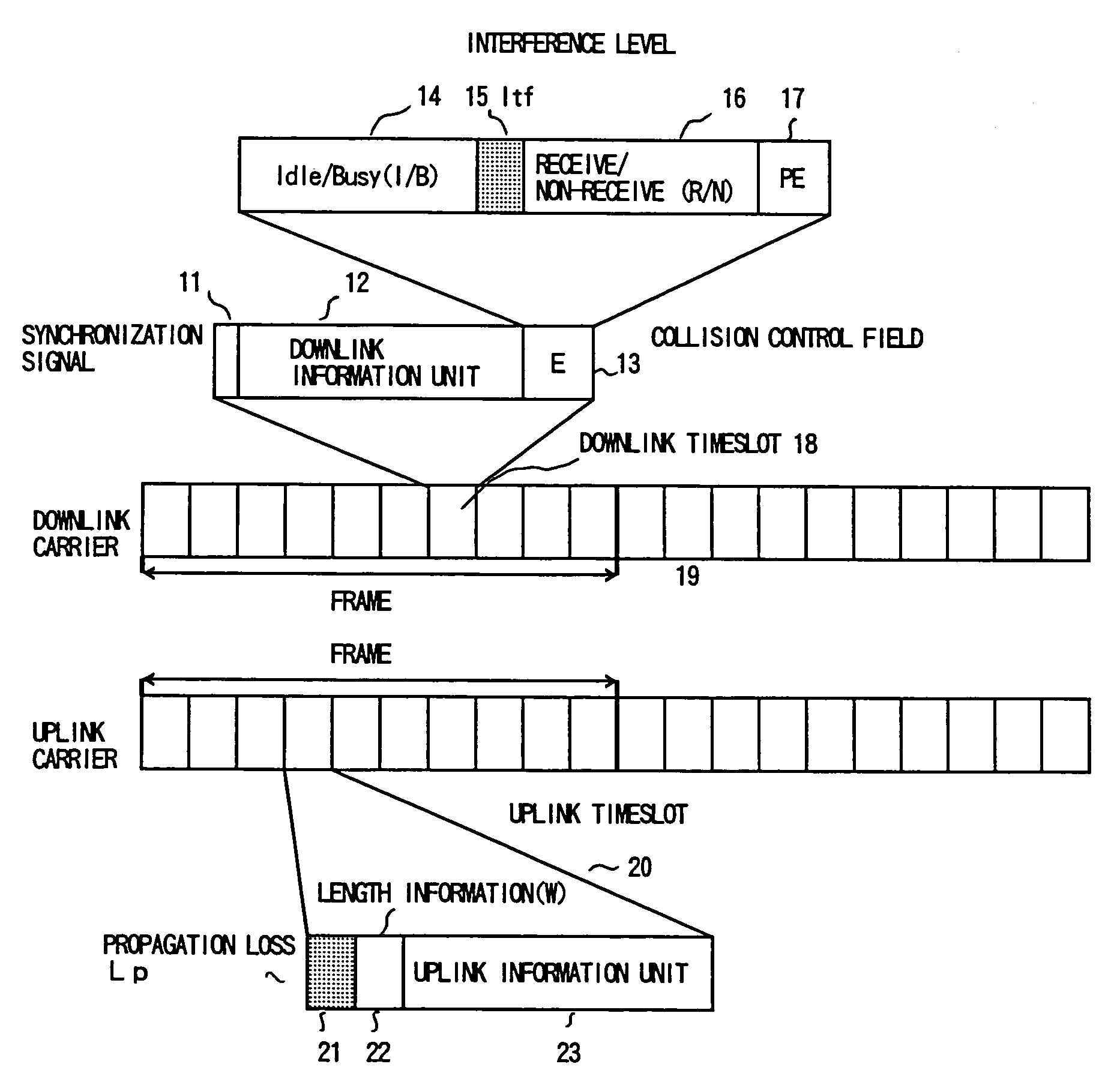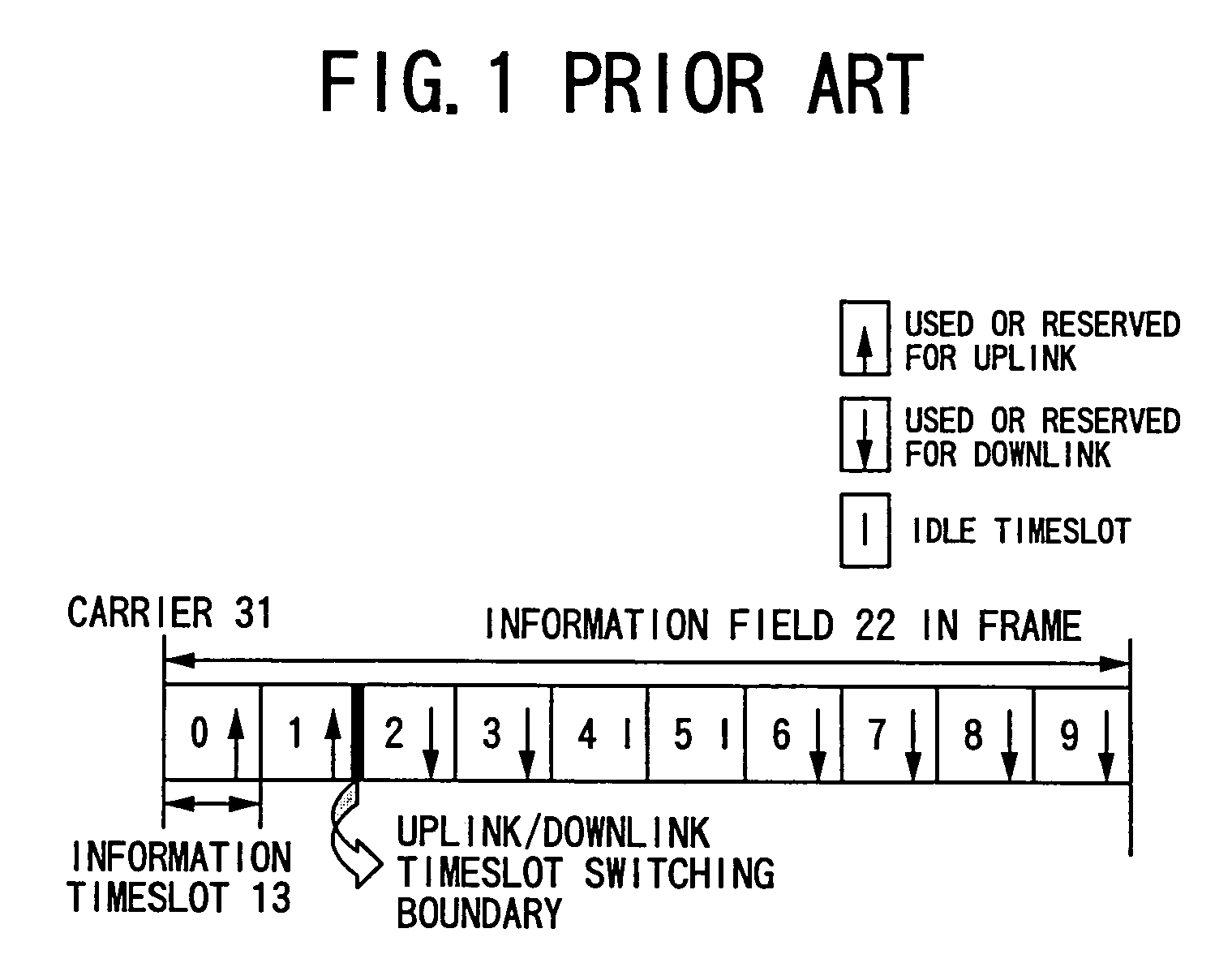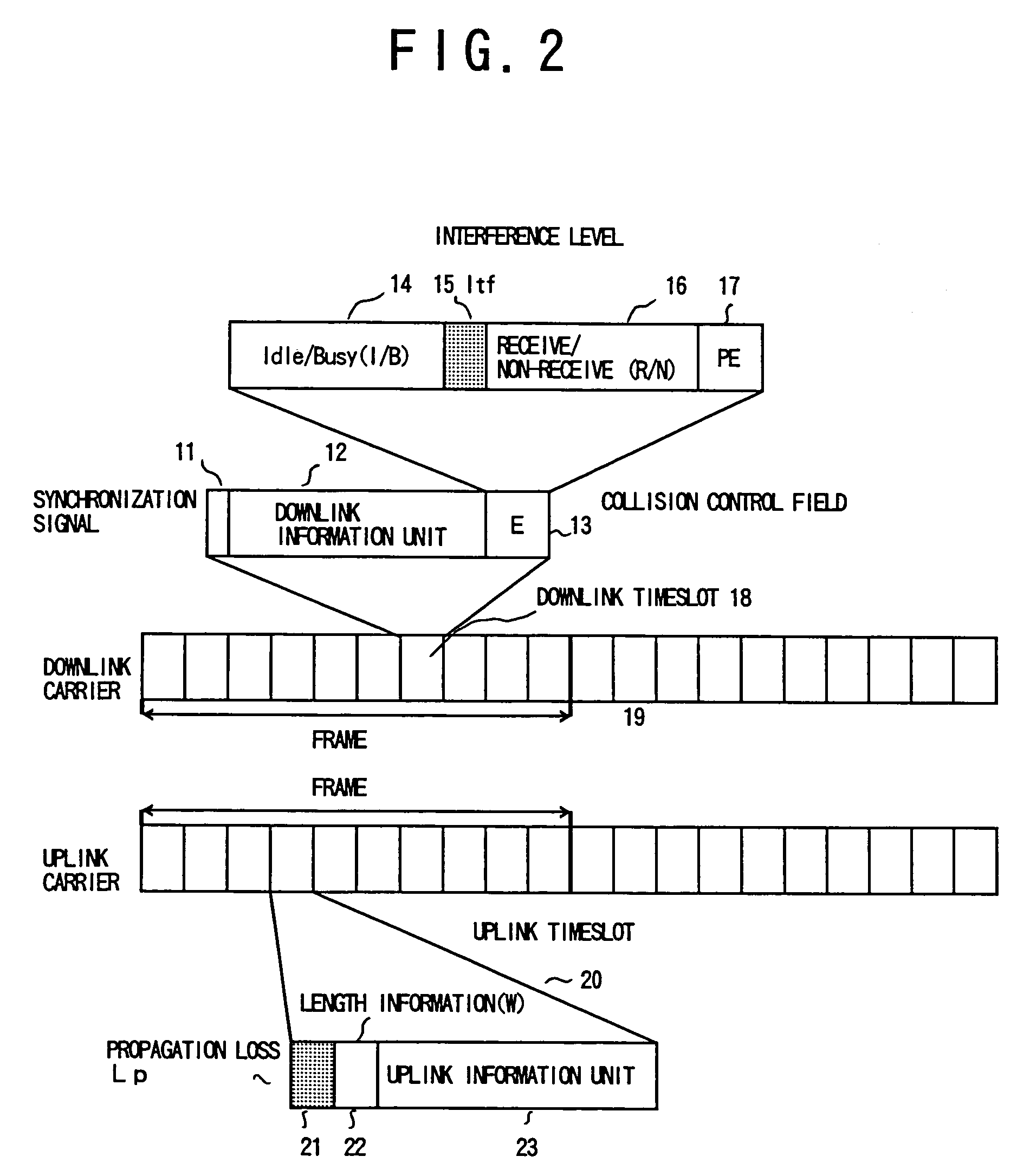Method, base station and mobile station for timeslot selection and timeslot assignment
- Summary
- Abstract
- Description
- Claims
- Application Information
AI Technical Summary
Benefits of technology
Problems solved by technology
Method used
Image
Examples
first embodiment
[0151]In the following, an embodiment of the present invention corresponding to the first object will be described as a first embodiment.
[0152]The present invention corresponding to the first object is applicable to TDMA and CDMA for an access method and is applicable to TDD and FDD for a duplex method. In the following, an embodiment in the case of TDMA / FDD will be described with reference to figures interference
[0153]FIG. 2 shows a timeslot configuration according to the first embodiment of the present invention. A carrier is divided into frames and the frame is divided into timeslots. As shown in a downlink timeslot 18 in the figure, a collision control field (E) 13 is added to each timeslot of the downlink carrier. The collision control field 13 includes Idle / Busy (I / B) bits 14, interference level (Itf) bits 15, receive / non-receive (R / N) bits 16, and partial echo bits 17. In an uplink timeslot 20, propagation loss (Lp) bits 21 and remaining information unit number (W) bits 22 ar...
second embodiment
[0190]In the following, the basic operation of the present invention for TDMA / TDD will be described with reference to figures.
[0191]FIGS. 14A and 14B show a timeslot configuration according to the second embodiment of the present invention. As shown in the figure, a carrier 31 includes a frame 32 which repeats with a predetermined interval. The frame includes a plurality of timeslots 33 (information timeslots), control mini-slots 34 each of which slots corresponds to one of the information timeslots 33. The information timeslot is used uplink or downlink.
[0192]In this embodiment, uplink or downlink is assigned without constraint. That is, it is permissible that a plurality of boundaries between uplink timeslots and downlink timeslots exist. In the example shown in FIG. 14A, a frame includes ten information timeslots and there are three uplink / downlink boundaries between S1–S2, S3–S4 and S4–S5 respectively.
[0193]The control mini-slots 34 are provided at the tail end of each frame. Th...
third embodiment
[0221]In the third embodiment, packet transmission is prioritized and timeslots are assigned by using the QoS request according to traffic state at the time of packet transmission acceptance.
[0222]In this embodiment, the prioritization includes two stages which are a service class 1 and a service class 2. However, it is possible to provide more service classes such that timeslots are allocated more flexibly according to multi-QoS.
[0223]In this embodiment, channel (timeslot) assignment is performed so that desired quality is assured maximally for a user of the service class 1 (high class). For a user of the service class 2 (low class), channel (timeslot) assignment is performed on best-effort basis.
[0224]In addition, quality is degraded for the class 2 user in higher priority when traffic is congested at the time of packet transmission acceptance.
[0225]That is, as mentioned later, when available timeslots are insufficient for a class 1 user, timeslots are assigned for the class 1 use...
PUM
 Login to View More
Login to View More Abstract
Description
Claims
Application Information
 Login to View More
Login to View More - R&D
- Intellectual Property
- Life Sciences
- Materials
- Tech Scout
- Unparalleled Data Quality
- Higher Quality Content
- 60% Fewer Hallucinations
Browse by: Latest US Patents, China's latest patents, Technical Efficacy Thesaurus, Application Domain, Technology Topic, Popular Technical Reports.
© 2025 PatSnap. All rights reserved.Legal|Privacy policy|Modern Slavery Act Transparency Statement|Sitemap|About US| Contact US: help@patsnap.com



